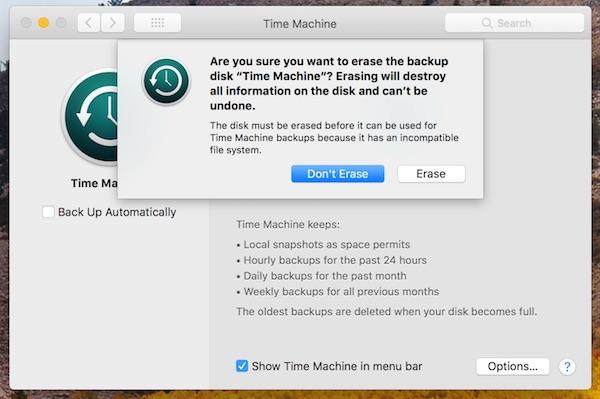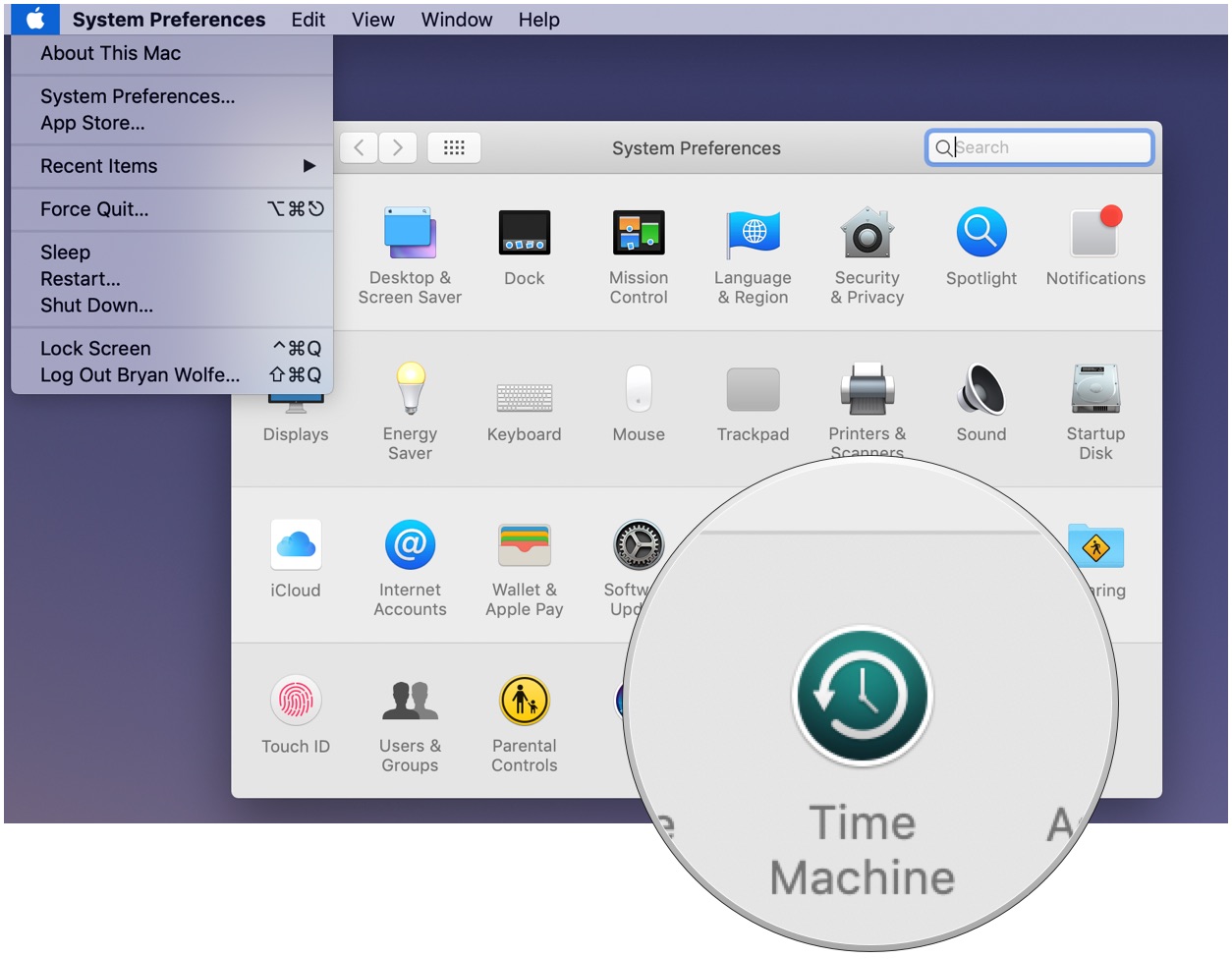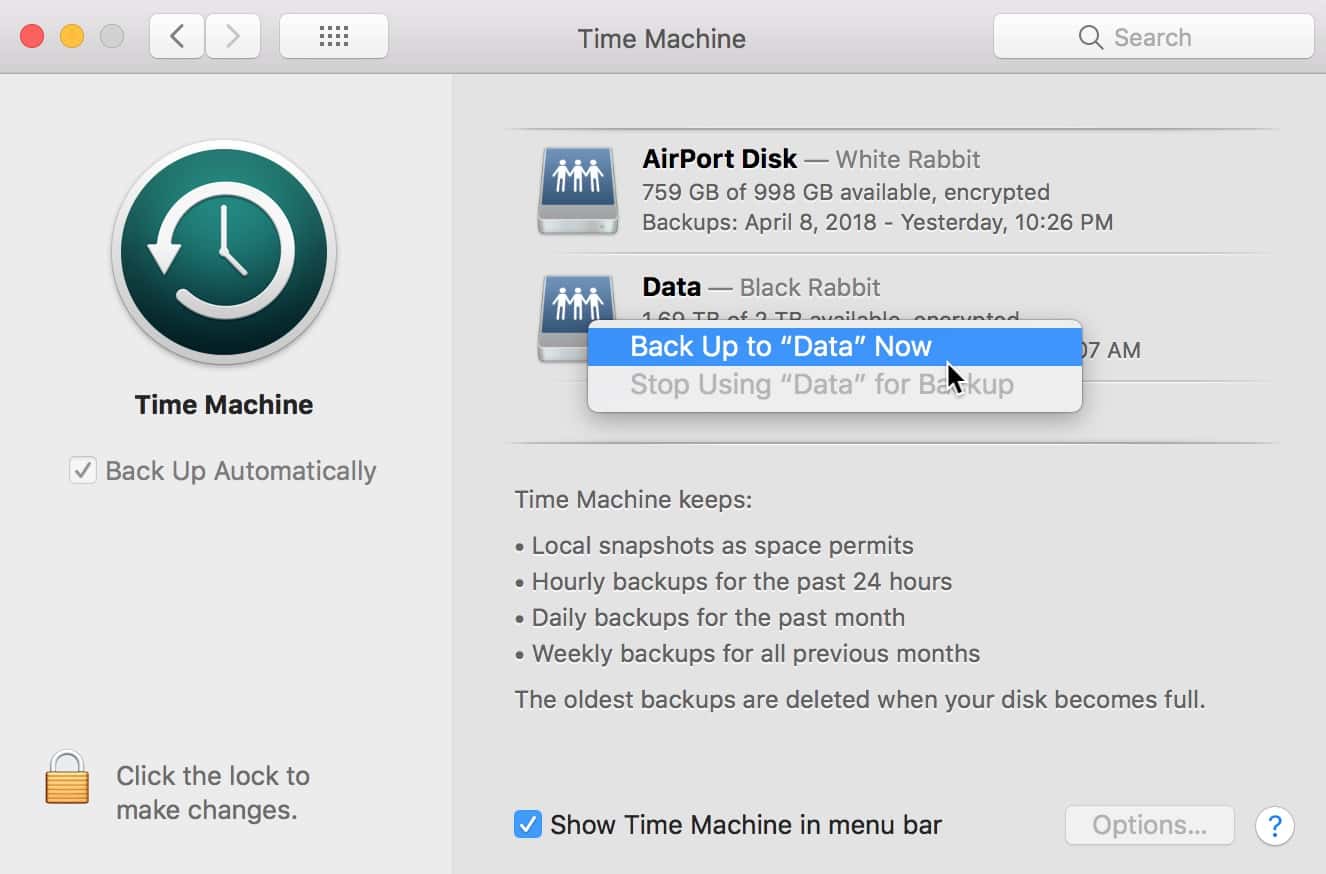
- #Force time machine backup mac how to
- #Force time machine backup mac software
- #Force time machine backup mac mac
#Force time machine backup mac mac
It’s how your Mac knows where to find your files.

#Force time machine backup mac how to
It’s how your files are laid out on the drive.Īnd it’s how your Mac understands how to write and read your files from your drive. The format of a drive is also known as its file system. Why Does Time Machine Need A Special Format You can get back to where you were by restoring your Mac’s Time Machine Backup. Or the worst of the worst your MacBook is stolen.Īt least you’ve not lost all your files. If you have to get it repaired or reset back to its factory settings. Having a recent Time Machine backup of your Mac will dig you out of a hole if anything happens to your Mac. Your Mac’s operating system, all your applications, your photos, music, videos, spreadsheets.
#Force time machine backup mac software
There no separate software for you to buy to do a basic backup of your Mac. It’s a reliable way of backing up your Mac.Īnd the best part is it’s right there for you.

HFS+ The Alternative Format For Your Mac's Time Machine Backup?.Is APFS A Good Drive Format To Use For A Time Machine Backup?.Why Does Time Machine Need A Special Format.You could try doing something like find /Volumes/Data/Your.sparsebundle/bands -print -delete and see if it likes that better. the “./” in your path simply means “relative to my current directory”. Regarding the “relative path potentially not safe”, I have not encountered that issue in this particular use case. I can only say that yes, connection timeouts are a likely candidate for some of your issues. I’m not a network person so I can’t really speak on how to solve that. That introduces potential connection timeout issues. Firstly, doing this wirelessly will be problematic simply because it’s slower. I’m guessing you have multiple problems mentioned from this and subsequent comments below. I’m hoping you got past this eventually however I’ll answer anyway in hope that others who encounter your problem might gain some insight. I don’t post very often on here anymore so I rarely check to see if comments were made. This should really go without saying, but I’m not responsible for any harm that comes to your computer, data, sanity, whatever from following these steps. Which backs us out of the current directory and then rm -rf. you can now safely delete the sparsebundle without affecting another sparsebundle by typing:.

That is normal when working with large data sets. Keep in mind when you first do this, there may be an initial delay before you see any feedback.



 0 kommentar(er)
0 kommentar(er)
